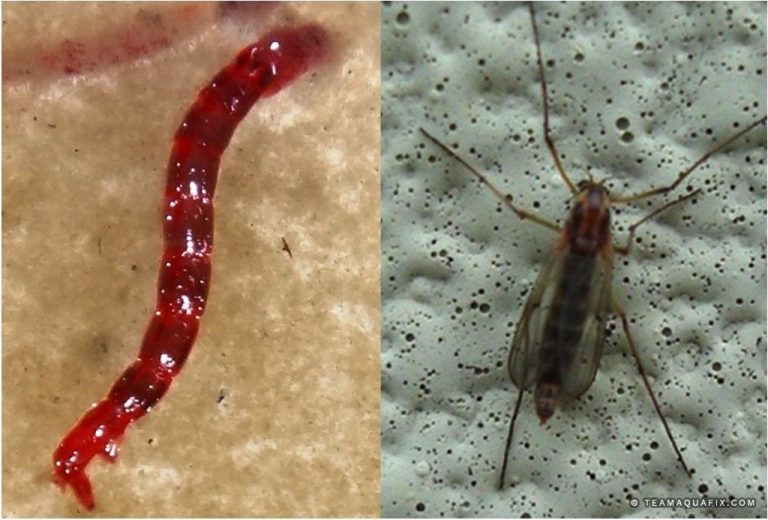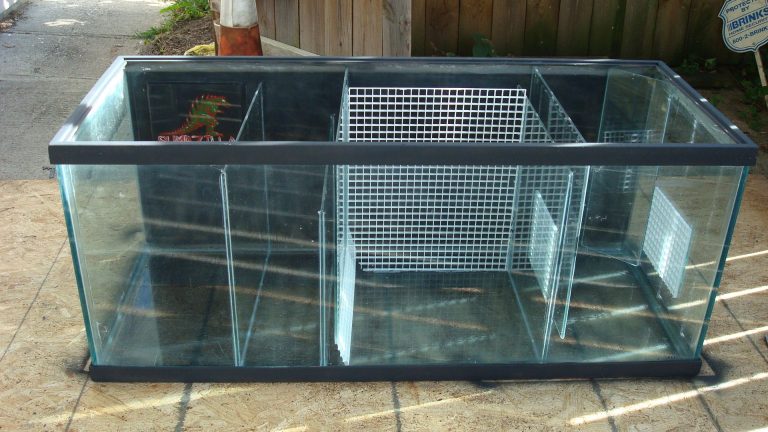Zeolite’s Speedy Removal of Ammonia: The Ultimate Guide
Zeolite is an efficient substance that rapidly removes ammonia. It can eliminate 90-95% of the ammonia within the first hour of application.
If you are looking for an effective way to get rid of ammonia in your aquarium or wastewater, zeolite is a powerful solution. Zeolites are minerals made up of aluminum, silicon, and oxygen, and they have a porous structure that adsorbs chemicals and traps them.
Ammonia, a toxic compound produced by organic waste, is one of the substances commonly removed by zeolite. It can rapidly eliminate 90-95% of the ammonia within the initial hour of application. Zeolite is commonly utilized in filtration systems for fish tanks, wastewater treatment plants, and other industrial applications. This article will examine how fast zeolite removes ammonia and how to choose the appropriate type for your needs.

Credit: www.aliexpress.com
What Is Zeolite?
Zeolites are microporous aluminosilicate minerals that contain water molecules in their structure. They came from the greek word “zein” which means “to boil” and “lithos” which means “stone”. Since they have the ability to lose and regain water, they are often referred to as molecular sieves.
Definition Of Zeolite:
Zeolites are a group of naturally occurring minerals that have a unique microporous structure and the ability to trap other molecules within their pores.
- Zeolites are made up of silica, aluminum, and oxygen atoms arranged in a three-dimensional framework.
- The porous structure of zeolite can trap molecules that are smaller in size than the size of its pores.
- The cavities of a zeolite can be filled with cations or water molecules, depending on their environmental conditions.
The Formation Process Of Zeolite:
The formation of zeolites is a complex process that involves volcanic activity, ground and surface water interaction, and mineral-rich hydrothermal fluids.
- Zeolites are formed from the reaction of alkaline volcanic ash and clay minerals in the presence of water.
- The mineral-rich hydrothermal fluids also contribute to the formation of zeolite.
- Zeolites can also be synthesized artificially by heating specific mixtures of chemicals to form crystals.
Types Of Zeolite:
There are more than 40 types of naturally occurring zeolites, but some are more commonly used than others. Some of the most popular types are:
- Clinoptilolite: Often used in water treatment due to its high adsorption capacity.
- Zsm-5: Used in the petrochemical industry for the conversion of methanol to gasoline.
- Mordenite: Used in catalytic cracking processes in the oil industry.
- Chabazite: Used in the production of oxygen from air.
Zeolites are mineral formations that have the ability to trap other molecules within their pores. They are formed through volcanic activity, ground and surface water interaction, and mineral-rich hydrothermal fluids. Over 40 types of zeolites exist, with unique applications in various industries such as water treatment, petrochemicals, and the oil industry.
Ammonia And Its Effects
Ammonia is a colorless gas that has a pungent smell. It is a compound which is made up of nitrogen and hydrogen atoms and can be found in various forms such as ammonium salts, urea, and organic molecules. Ammonia is widely used in the production of fertilizers, plastics, and other industrial chemicals.
It is also produced by the natural decay of organic matter and is found in both land and aquatic environments. In this blog post, we will discuss the effects of ammonia on both health and the environment and the sources of its production.
Definition Of Ammonia
Ammonia is a highly reactive gas that has a distinctive odor. It is a compound that is made up of one nitrogen atom and three hydrogen atoms (nh3). It is commonly used in the production of fertilizers, plastics, and other industrial chemicals.
Ammonia can also be produced naturally as a result of the decay of organic matter such as animal waste.
Effects Of Ammonia On Health And Environment
Ammonia can have harmful effects on both human health and the environment. Here are the key points to note:
- Exposure to high levels of ammonia can cause irritation to the eyes, nose, and respiratory system.
- In severe cases, exposure to ammonia can lead to lung damage and even death.
- Ammonia can also have harmful effects on aquatic life due to its high toxicity levels.
- When ammonia reacts with other pollutants in the air, it can contribute to the formation of smog, acid rain, and other environmental problems.
Sources Of Ammonia
Ammonia is produced both naturally and by human activities. Here are the sources of its production:
- Natural sources such as the decay of organic matter and the decomposition of animal waste can release ammonia into the environment.
- Industrial processes such as the production of fertilizers, plastics, and other chemicals can also release large amounts of ammonia.
- Agricultural practices such as livestock farming and the use of nitrogen-rich fertilizers can lead to ammonia emissions.
Ammonia is a compound that is widely used in various industrial processes, but it can have harmful effects on both human health and the environment. It is important to monitor and regulate ammonia emissions to minimize its impact.
How Does Zeolite Remove Ammonia?
Adsorption And Ion Exchange
Zeolite’s ability to remove ammonia is because of its adsorption and ion exchange properties. It works by adsorbing ammonia gas or nh3 molecules into its cage-like structure due to its high surface area. The surface area of zeolites increases with the decrease in the size of its pores, making it an excellent material to trap ammonia molecules.
Ion exchange is another key process that contributes to ammonia removal using zeolite. During ion exchange, the positively charged ions in zeolite cages replace the cations of ammonia, leading to the reduction of ammonia levels.
Mechanism Of Zeolite’S Ammonia Removal
Zeolites are unique minerals with a honeycomb-like structure that is vital for their ammonia removal mechanism. The pore sizes allow ammonia molecules to diffuse into the zeolite structure, after which they interact with the cations present in the zeolite frameworks.
These cations interact with the ammonia molecule’s nitrogen and hydrogen atoms, removing them from the environment.
Zeolites also have a high affinity for water molecules, which activates them by breaking the hydrogen bonds holding the cage structure together. When activated, the result is a more significant number of active sites for ammonia adsorption and ion exchange.
Benefits Of Using Zeolite
Zeolites are an excellent alternative for effective ammonia removal when compared to traditional methods. There are several benefits of using zeolite, including:
- Zeolite is a highly efficient material for ammonia removal and can reduce ammonia levels to as low as 0.2 ppm (parts per million) in wastewater treatment applications.
- Zeolite can be used repeatedly with little to no degradation in its removal capability.
- Its porous structure and high surface area offer the added benefit of removing other contaminants from water and air, such as heavy metals, pesticides, and odor-causing compounds.
- Zeolite is eco-friendly and sustainable as it can be produced from natural materials, making it an appropriate choice for green remediation projects.
Zeolite is an efficient, eco-friendly, and sustainable material for removing ammonia from the environment. Its adsorption and ion exchange properties, as well as its unique honeycomb structure, make it an excellent alternative to traditional ammonia removal methods.
How To Use Zeolite For Ammonia Removal?
Zeolite is a naturally occurring mineral that has been proven to be an effective agent in ammonia removal. With its unique structure and high surface area, zeolite can trap and remove ammonia from various sources such as aquariums, soil, and wastewater.
We will explore how zeolite works and the best ways to utilize it for ammonia removal.
Different Forms Of Zeolite
Zeolite comes in different forms, but the most commonly used forms are powdered and granular. Both forms have the same molecular structure and can effectively remove ammonia. However, the choice of form depends on the specific application. For instance, powdered zeolite works best in aquariums while granular zeolite is suitable for large-scale applications such as wastewater treatment plants.
Tips For Proper Usage
To maximize the efficiency of zeolite in removing ammonia, it is essential to follow these tips:
- Pre-treat zeolite: Before using zeolite for ammonia removal, it’s crucial to pre-treat it to remove any impurities. This can be achieved by rinsing it thoroughly with clean water.
- Use the right amount: The amount of zeolite to use depends on the ammonia level and the volume of the solution. It’s important to use the recommended amount to avoid overloading the zeolite, which can reduce its effectiveness.
- Monitor and replace zeolite: As zeolite traps ammonia, it becomes saturated, reducing its effectiveness. It’s essential to monitor the ammonia level regularly and replace zeolite when it reaches its capacity.
- Place zeolite strategically: For effective ammonia removal, it’s necessary to place zeolite strategically. In aquariums, for instance, zeolite works best when placed in a filter, where it comes into contact with the water flow.
Zeolite’S Effectivity Rate
The effectiveness of zeolite in ammonia removal depends on several factors such as ph level, temperature, and the amount of ammonia in the solution. In most cases, zeolite can remove up to 90% of ammonia within a few hours. However, the effectiveness rate may vary depending on the specific application.
Zeolite is an effective and natural solution for ammonia removal. Using the right form, amount, and placement can dramatically increase its efficiency. Regular monitoring and replacement of zeolite are crucial in maintaining optimal ammonia removal.
Frequently Asked Questions On How Fast Does Zeolite Remove Ammonia
How Does Zeolite Remove Ammonia?
Zeolite removes ammonia through ion exchange, where ammonia ions are replaced by sodium ions.
Is Zeolite An Effective Ammonia Remover?
Yes, zeolite is an effective ammonia remover, and it can reduce ammonia levels up to 99%.
How Fast Does Zeolite Remove Ammonia?
Zeolite can remove ammonia almost instantly upon contact, making it a fast-acting solution.
How Long Does Zeolite Last In Ammonia Removal?
Zeolite can last for several months without losing its ability to remove ammonia if maintained properly.
Conclusion
With its exceptional cation-exchange properties, zeolite is a powerful absorbent material that can quickly and effectively remove ammonia from water. The efficiency of zeolite in ammonia removal depends on factors such as reaction time, temperature, and ph. Nevertheless, research indicates that zeolite can remove up to 70% of the ammonia within one hour under optimal conditions – proving to be a promising and eco-friendly solution for water treatment and sewage treatment applications.
In addition, zeolite’s natural abundance, low-cost, and reusability make it an attractive choice for many industries. Overall, using zeolite as a remedy for ammonia contaminated water can not only help reduce environmental pollution but also provide a cost-effective and efficient alternative to traditional ammonia removal methods.
So, it is no surprise that many researchers and scientists have regarded zeolite as one of the most effective natural substances for removing ammonia from water.






